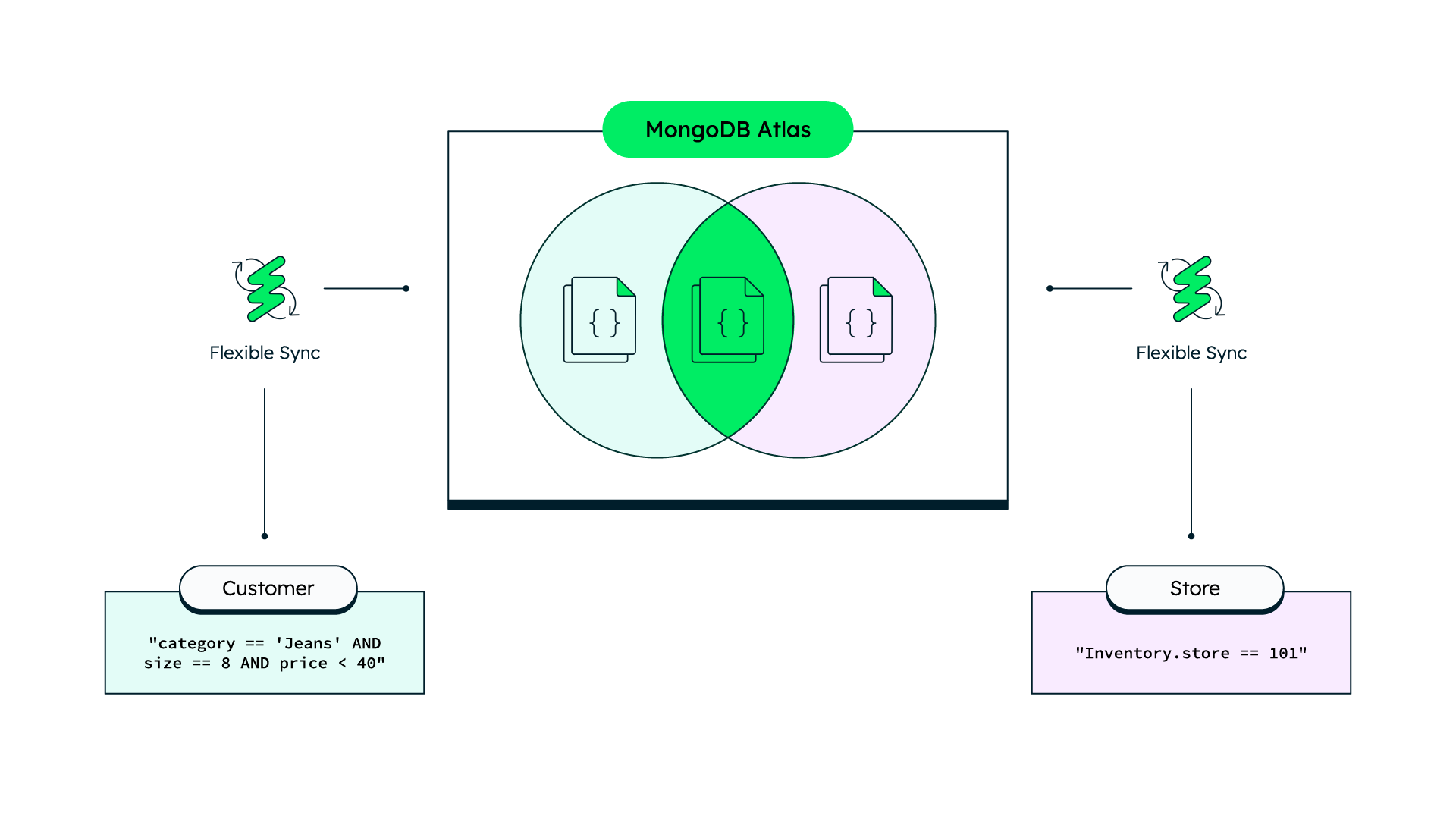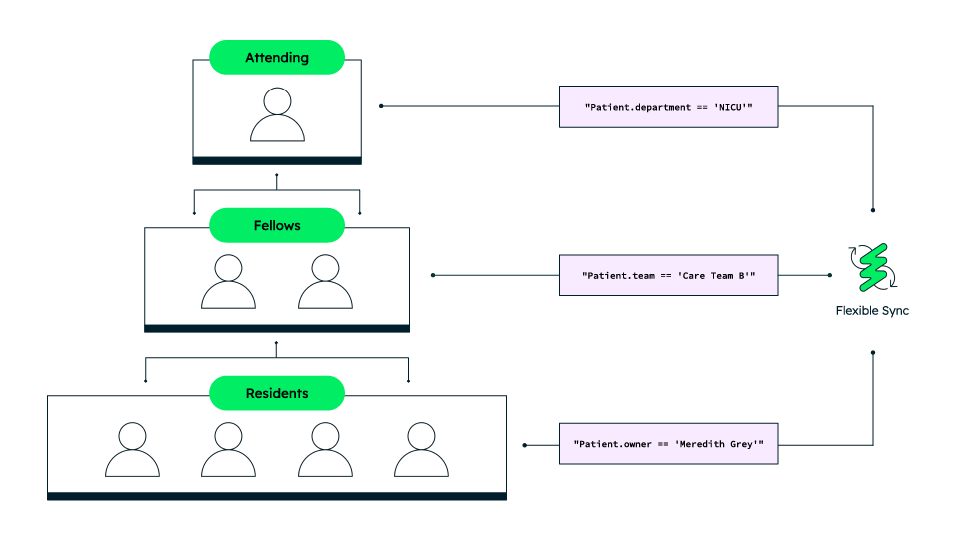Introducing MongoDB Realm’s Flexible Sync – Now Available in Preview
>> Announcement: Some features mentioned below will be deprecated on Sep. 30, 2025. Learn more.
Twelve months ago, we made MongoDB’s edge-to-cloud data synchronization service, Realm Sync, generally available. Since then, Sync has helped hundreds of our customers build reliable, offline-first mobile apps that serve data to millions of end users – from leading telematics providers to chart-topping consumer apps.
Historically, Realm Sync has worked well for apps where data is compartmentalized and permissions rarely change, but dynamic use cases with evolving permissions required workarounds. We knew we could do more, so today we are excited to announce the next iteration of Realm Sync – Flexible Sync. With the introduction of Flexible Sync, we are redefining the sync experience by enabling even the most complex use cases out-of-the-box without requiring any custom code.
Intuitive query-based sync
Distinctly different from how Realm Sync operates today, Flexible Sync lets you use language-native queries to define the data synced to user applications. This more closely mirrors how you are used to building applications today – using GET requests with query parameters – making it easy to learn and fast to build to MVP.
Flexible Sync also supports dynamic, overlapping queries based on user inputs. Picture a retail app that allows users to search available inventory. As users define inputs – show all jeans that are size 8 and less than $40 – the query parameters can be combined with logical ANDs and ORs to produce increasingly complex queries, and narrow down the search result even further.
In the same application, employees can quickly limit inventory results to only their store’s stock, pulling from the same set of documents as the customer, without worrying about overlap.

Document-level permissions
Whether it’s a company’s internal application or an app on the App Store, permissions are required in almost every application. That’s why we are excited by how seamless Flexible Sync makes applying a document-level permission model when syncing data – meaning synced documents can be limited based on a user’s role.
Consider how an emergency room team would use their hospital’s application. A resident should only be able to access her patients’ charts while her fellow needs to be able to see the entire care team’s charts. In Flexible Sync, a user’s role will be combined with the client-side query to determine the appropriate result set. For example, when the resident above filters to view all patient charts the permission system will automatically limit the results to only her patients.

Real-time collaboration optimizations
Flexible Sync also enhances query performance and optimizes for real-time collaboration by treating a single object or document as the smallest entity for synchronization. This means synced data is shared between client devices more efficiently and conflict resolution incorporates changes faster and with less data transfer than before.
Getting started
Flexible Sync is available now. Simply sign up or log in to your cloud account, deploy a Realm app, select your sync type, and dive right in.

Flexible Sync is compatible with MongoDB 5.0, which is available with dedicated Atlas database clusters (M10 and higher). Shared-tier cluster support for 5.0 and Flexible Sync will be made available mid-February.
Have questions? Check out our documentation or the more detailed announcement post on the Developer Hub.
Looking ahead
Our goal with Flexible Sync is to deliver a sync service that can fit any use case or schema design pattern imaginable without custom code or workarounds. And while we are excited that Flexible Sync is now in preview, we’re nowhere near done.
The Realm Sync team is planning to bring you more query operators, permissions integrations, and enhancements over the course of 2022. We look to you, our users, to help us drive the roadmap. Submit your ideas and feature requests to our feedback portal and ask questions in our Community forums. Happy building!